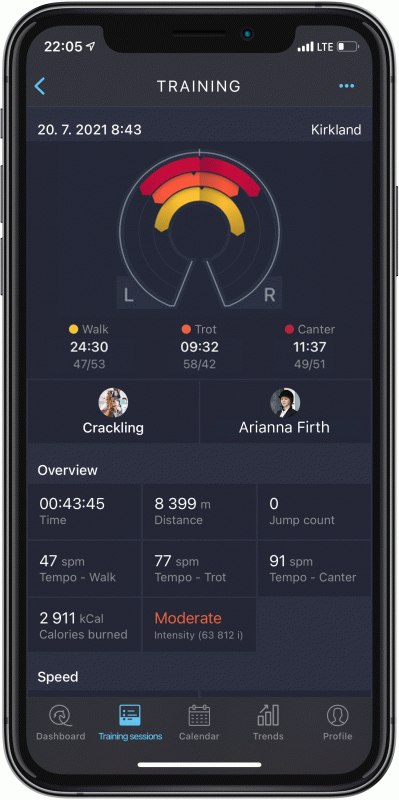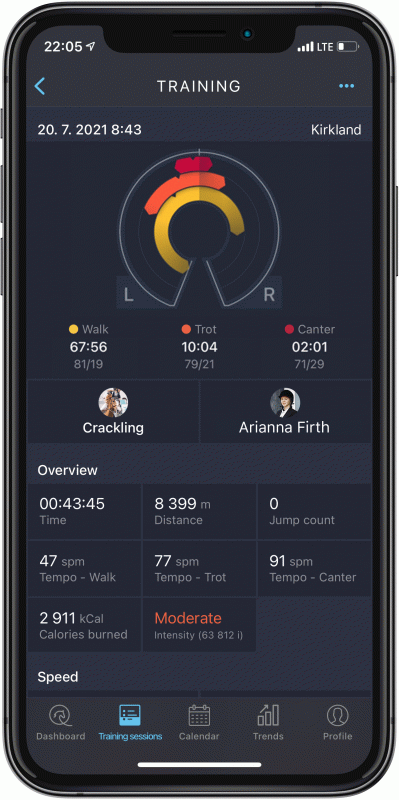How To Make Sure Not To Create Any Muscle Imbalances On Your Horse.
Our horseshoe graph and its symmetry rings show you a couple of essential values: the time spent in each gait, the percentage of riding to left and right in each gait, and the ratio of the gaits during a session.
These numbers tell you if you equally burden your horse’s left and right side. Some riders use this as a mere controlling function because they naturally ride equally to left and right. However, many riders are surprised when they see their results, because they may not be as even as the riders expect them to be. One of the main reasons is that both horses and riders feel more comfortable moving either to the left or right. In horses, you can liken it to the left- and right-handedness. If a horse is, for example, right-handed and has a more comfortable movement to the right, the rider may unconsciously prefer this direction.
Then there comes the rider themselves. If they feel more comfortable in one direction, either because of a pathological, physical, or mental reason, they may diminish the time spent in a less comfortable direction.
Unequal burdening of the horse’s body may lead to health problems or even pain, and it can become a virtuous circle. Therefore, it is important to control the evenness of your movement to avoid problems and lengthy health issues, and to support the natural balance of your horse’s body.
Another way of using your symmetry information is within rehabilitation. If your vet or other specialist gives you a precise time frame of your horse’s workload, your EQUIMO analysis provides information to help you stick to this time frame.
In the first picture, you can see a relatively balanced session. In the second picture, you see an overly unbalanced session. If you often provide unbalanced sessions, your horse may, as a result, develop uneven muscles, which lead to an unbalanced body and problems with the motion system.







